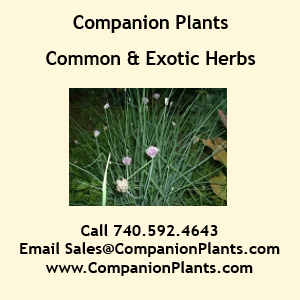
Hidden far from view there exists a secret partnership. In soils around the world and, quite possibly, in your own back yard, there is a connection being made. An alliance between two unlikely companions, in a dance with two unlikely leads. A connection between a fungus and the roots of a plant, a connection called Mycorrhiza.
Mycorrhiza is the term given to describe the symbiotic relationship between a fungus and the roots of most vascular plants. In this case the relationship is classified as mutual but on rare occasions it has been found to be mildly pathogenic. A mutual relationship simply means that both the fungus and the plant contribute something to one another that aids in their ability to continue living. If the relationship was pathogenic by nature, one of the two participants would be taking needed resources from the other without supplying anything in return, much like a parasite. The mycorrhiza relationship occurs naturally in soils all over the world. An estimated 70-90% of all vascular plants form some type of mycorrhizal association. There are many types of mycorrhizas forming fungi, but they are generally placed into two distinct categories, ectomycorrhiza and endomycorrhiza. The best way to explain the difference between the two is that ectomycorrhiza lives on the outside of the roots while endomycorrhiza resides inside the roots cell wall. But not in the interior of the cell, it stays within the cell membrane, and will not disrupt internal cell behavior.
Though the two main types of mycorrhizal association occur in different ways, the results of both are generally the same: A root zone, or rhizosphere, with more surface area and an increased ability to absorb water and elemental minerals, which are commonly referred to as nutrients. The mycorrhiza hyphae are smaller in diameter than the root itself, allowing them to branch out and navigate a larger area of soil. Think of it like a net. The roots themselves only create a small net for catching nutrients. With the addition of mycorrhiza fungi, the plants net can increase in size substantially, allowing for more nutrients to be caught. The hyphae can locate nutrients that may be inaccessible to the plants existing root structure and ‘unlock’ them, making them available to the plant via the roots. This is most helpful in soils of poor quality and low mineral availability. Tests have shown that plants involved in a mycorrhiza relationship have an enhanced ability to acquire nutrients, especially phosphorus, from the soil and tend to be more drought resistant. Mycorrhiza inoculated plants have a competitive edge in the battlefield of nature. In the soil, the more surface area plants roots can inhabit the more likely it is to survive.
While the mycorrhiza relationship is one of a symbiotic nature, it seems rather one sided. The plant receives the benefit of a larger root zone that assists in the increased uptake of water and nutrients. But what does the fungus get? Well, the fungus gets something that is essential to its ability to live, it gets energy. When plants perform photosynthesis, one of the products created is sugar, such as glucose and sucrose. Through a process called translocation (the movement of material through a plant vascular structure), the sugars are delivered to the fungus where they are utilized as carbohydrates, giving the fungus the energy, it needs to operate.
The use of mycorrhiza relationships can benefit the world of agriculture in many ways. Common practices such as heavy tilling, removing of top soils and soil compaction can destroy the soils potential to support mycorrhiza forming fungi. The fungi can come back after these kinds of events, but they are usually very slow to re-populate. Using mycorrhiza inoculants can help them to colonize faster, especially if the soil still contains a modest amount of organic matter. If it is used in large farming operations, mycorrhiza fungi have the potential to increase each plant’s ability to locate and utilize water and nutrients that are vital to their success. Even in such a densely populated growing area, like a corn field, where competition for mineral nutrients is extremely high. This could lead to less dependence on supplemental fertilizing, especially since many fields already contain high levels of phosphorus, an element that mycorrhiza related fungi can help to ‘unlock’.
In landscaping, the use of mycorrhiza inoculation, especially when transplanting new turf grass or trees and shrubs, can result in a higher transplant survival rate and over all healthier plants. Even in your own garden the use of mycorrhiza can help you achieve better growth and higher yields. Mycorrhizal inoculants come in a variety of forms. Commercially they can be purchased as liquids, gels, granular and water soluble. When choosing a product, look for one with a wide variety of fungal spores to increase your chances of successful inoculation.
Kyle Ladenburger is an avid indoor and outdoor gardener.
Related Articles & Free Email Newsletter Sign Up
ARBICO Organics Root Build 240 Mycorrhizal Blend Product Review
Beneficial Microorganism Overview




Comment here